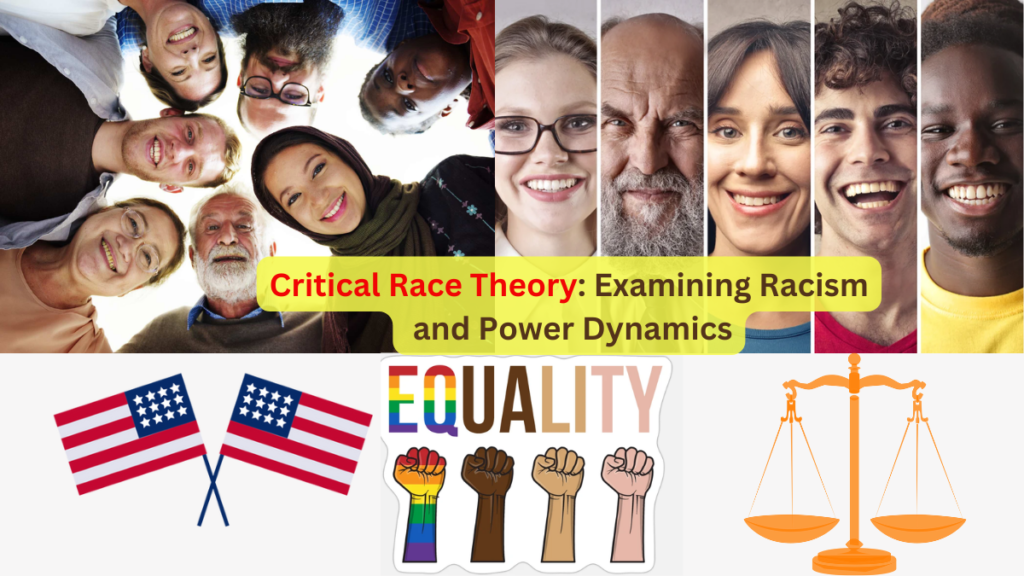
Critical Race Theory
Introduction
Critical race theory (CRT) has emerged as a powerful framework for understanding the complexities of racism and power dynamics in the United States. Originating as an intellectual movement in the 1970s, CRT delves into the ways systemic racism is perpetuated through institutions and the law. This article provides an in-depth exploration of CRT, including its principles, key scholars, and branches. We will delve into its analysis of racism and power, its application in different aspects of US society, controversies surrounding it, and both its defense and support.
Understanding Critical Race Theory
The Origins of Critical Race Theory
CRT traces its roots to legal scholars such as Derrick Bell, Kimberlé Crenshaw, and Richard Delgado, who sought to address the limitations of traditional legal frameworks in understanding the persistent impact of racism in the United States. It emerged as a response to the inadequacies of color-blind jurisprudence, which fails to account for the systemic nature of racial disparities.
Key Principles of CRT
At its core, CRT challenges the notion of race as a biological given and instead views it as a socially constructed concept. It highlights the role of power and privilege in maintaining racial hierarchies and critiques the ways institutions perpetuate racial inequalities.
The Evolution of CRT as an Intellectual Movement
While CRT originated in the legal domain, it has evolved into an intellectual and social movement that extends its influence beyond the legal sphere. Scholars from various disciplines, including education, sociology, and political science, have embraced CRT’s principles to examine racism and power dynamics in their respective fields.
Also, Read the best BOOKS ABOUT EDUCATION REFORM
Analyzing Racism and Power with CRT
Race as a Social Construct
CRT rejects the idea of race as an innate characteristic and instead posits that race is a social construct. This means that race is not biologically determined but is shaped by societal beliefs, attitudes, and historical contexts.
Systemic and Institutional Racism
CRT emphasizes that racism is not solely the result of individual actions but is deeply embedded in the structures and institutions of society. Institutional racism refers to policies and practices that perpetuate racial disparities and advantage, dominant racial groups.
Intersectionality in Critical race theory
Intersectionality acknowledges that race intersects with other social categories such as gender, class, and sexuality. Understanding these interconnected identities is crucial to comprehending the experiences of individuals and groups.
Whiteness and White Privilege
Whiteness refers to the normative power and privilege associated with being white. CRT exposes how white privilege perpetuates racial inequalities and advantages white individuals in various societal domains.
Microaggressions and Their Impact
Microaggressions are subtle, often unintended expressions of bias or prejudice. CRT highlights how these seemingly innocuous acts contribute to the maintenance of racial hierarchies and can have significant psychological and emotional effects on marginalized groups.
Interest Convergence Theory
Interest convergence theory suggests that progress for Non-majority racial groups is only achieved when their interests align with those of the dominant white group. This concept illuminates the challenges faced by marginalized communities in advocating for their rights.
The Power of Counter-Storytelling and Voice
CRT scholars employ counter-storytelling to challenge dominant narratives that perpetuate racial biases. Amplifying marginalized voices is essential in exposing the reality of racial discrimination and inequality.
You may Like to Read Things to Do in Washington State: A Guide for Travelers
Applying Critical race theory in Various Aspects of the US
CRT in Law and Legal Studies
In the realm of legal studies, CRT critiques color-blind jurisprudence and argues that the law must recognize and address the historical and ongoing impact of racism. It challenges the notion of a race-neutral legal system and calls for race-conscious legal analysis.
CRT in Politics and Policy
CRT sheds light on how racial issues are manipulated in politics, both to advance and suppress certain agendas. Understanding the role of race in political discourse is crucial for addressing racial disparities and creating equitable policies.
CRT in Culture and Media
CRT examines how stereotypes and portrayals in media perpetuate racial biases. It encourages media representations that challenge these harmful narratives and promote accurate depictions of marginalized communities.
Critical race theory in Education
CRT advocates for culturally responsive teaching and a curriculum that reflects the diverse experiences of students. By acknowledging the impact of racism in educational settings, CRT aims to address disparities and foster inclusive learning environments.
Controversies Surrounding CRT
Recently, critical race theory has sparked heated political discussions in the US. The focus of these debates is primarily on public schools, where parents, teachers, and administrators are navigating how to address topics of race, discrimination, and inequality in their classrooms.
Critiques from Academic and Political Opponents
CRT has faced strong opposition from academic and political circles, particularly from conservative activists and lawmakers. Critics accuse CRT of being divisive, anti-American, and promoting collective guilt among white individuals.
Common Misconceptions and Misunderstandings
Misunderstandings about CRT have led to misconceptions, such as the belief that it teaches that all white people are racist or that it denies individual agency. Addressing these misconceptions is essential for promoting a more nuanced understanding of CRT.
Banning and Restricting Critical race theory in the US
Recent Efforts to Limit CRT Teaching
Some states and school districts have attempted to ban or restrict the teaching of CRT. These efforts have sparked debates about free speech, academic freedom, and the role of education in addressing racial issues.
Legal and Constitutional Implications
Bans on CRT teaching have raised legal questions about the constitutionality of limiting academic discourse. Challenges to these restrictions have surfaced, arguing for the importance of an open and honest discussion about race in education.
Reactions and Consequences
The restrictions on CRT teaching have sparked reactions from educators, students, parents, and civil rights groups. Advocates argue that such bans hinder progress in addressing racial injustices and deny students a comprehensive understanding of history and society.
Defense and Support for Critical race theory
Justifying the Teaching of Critical race theory
Supporters of CRT defend its educational value, emphasizing its role in fostering a deeper understanding of racial inequalities and systemic racism. Teaching CRT equips students to critically analyze historical and contemporary racial issues, empowering them to be active participants in shaping a more just society.
Advantages of Critical race theory in Addressing Racial Injustices
CRT offers a nuanced perspective on racism, allowing for a more comprehensive understanding of its impact on marginalized communities. By examining the ways systemic racism persists, CRT provides a framework for implementing effective solutions to address racial injustices.
Sources for Learning More about Critical race theory
For those interested in delving deeper into CRT, various academic publications, journals, and books authored by scholars such as Derrick Bell, Kimberlé Crenshaw, and Richard Delgado offer valuable insights into the principles and applications of CRT.
Conclusion
Critical race theory is a multifaceted framework that seeks to illuminate the complexities of racism and power dynamics in the United States. Rooted in legal studies and expanded into an intellectual and social movement, CRT challenges prevailing narratives and encourages a more profound understanding of racial inequalities. Despite facing controversies and attempts to restrict its teaching, CRT continues to play a vital role in advancing discussions about race and social justice.
FAQs
Is Critical Race Theory taught in K-12 schools?
As of now, educators primarily teach CRT in higher education and academic settings, but debates have emerged about its potential inclusion in K-12 curricula, leading to discussions about the appropriate age and context for teaching CRT.
Does Critical Race Theory promote division among races?
While opponents argue that CRT fosters division, proponents emphasize that it highlights systemic racism and seeks to promote understanding and equity, ultimately striving for a more unified and just society.
Can Critical Race Theory address contemporary racial inequalities?
Yes, CRT’s examination of systemic racism and power dynamics provides a lens through which to understand and address contemporary racial inequalities. This is leading to more effective strategies for social change.
How can Critical Race Theory benefit society as a whole?
By delving into the historical and ongoing impact of racism, CRT encourages open dialogue. And a more nuanced understanding of race, ultimately fostering a more equitable and inclusive society.
What is the future of Critical Race Theory in the US?
The future of CRT remains uncertain, as debates about its inclusion in education and its overall influence on societal discussions about race continue. However, its role in promoting critical analysis and advocating for racial justice is likely to persist.
Who created critical race theory?
CRT was created by a group of legal scholars and activists in the 1970s and 1980s. Who is dissatisfied with the limitations of traditional civil rights approaches to addressing racial discrimination and inequality in the US?
What are some of the main concepts of critical race theory?
Some of the main concepts of CRT include race as a social construct, racism as a systemic. And institutional phenomenon, intersectionality, whiteness, microaggressions, interest convergence, counter-storytelling, and voice.
Why is critical race theory controversial?
CRT is controversial because it challenges the dominant narratives and assumptions about race and racism in the US. And exposes the ways that they benefit white people at the expense of people of color. It also critiques the liberal notion of color blindness and neutrality in law and society. And advocates for social justice and transformation.
How is critical race theory being banned or restricted in the US?
Some states and districts are actively banning or restricting CRT. They have passed or proposed legislation or policies that prohibit or limit the teaching of CRT or related topics in schools and federal agencies. These efforts are based on the claim that CRT is divisive, anti-American, Marxist, or indoctrinating.
How is critical race theory being defended or supported in the US?
Educators, students, parents, civil rights groups, and other allies are defending or supporting CRT, arguing that it is a valuable and necessary tool for understanding and addressing racial inequalities and injustices in the US. They also assert that teaching CRT is protected by academic freedom and free speech rights.



